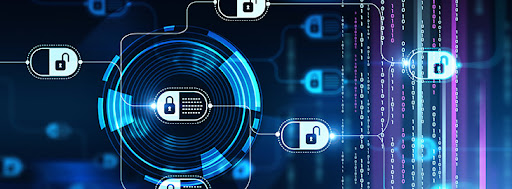
Protecting Your Virtual Fortress: Essentials of Cybersecurity
In today’s interconnected world, where our personal and professional lives rely heavily on the internet and digital technology, the importance of cybersecurity cannot be overstated. The virtual world is akin to a fortress, and just like any fortress, it must be protected from external threats. This article delves into the essentials of cybersecurity, highlighting its significance and providing insights into safeguarding your digital realm.
The Cybersecurity Landscape
Cybersecurity encompasses a broad range of practices, technologies, and strategies designed to safeguard digital systems, networks, and data from malicious actors. It’s an ongoing battle in an environment where hackers, cybercriminals, and threat actors are constantly evolving their tactics to breach digital fortresses. To navigate this landscape effectively, individuals and organizations must understand and implement essential cybersecurity measures.
Understanding the Threats
Before we delve into the essentials of cybersecurity, it’s essential to grasp the threats that bloom in the digital realm. Cyber threats come in various forms, including:
- Malware: Malicious software such as viruses, ransomware, and spyware that can infiltrate your systems and compromise data.
- Phishing: Deceptive attempts to trick individuals into revealing sensitive information, often through fraudulent emails or websites.
- Denial of Service (DoS) Attacks: Overloading a network or website to make it unavailable to users
- Social Engineering: Manipulating people into divulging confidential information or performing actions they shouldn’t.
- Insider Threats: Malicious actions or negligence by individuals within an organization.
Essential Cybersecurity Measures
- Robust Passwords and Multi-Factor Authentication (MFA): Strong, unique passwords are your first line of defense. Use a combination of letters, numbers, and special characters. Implement MFA wherever possible, as it adds an extra layer of protection.
- Regular Software Updates: Keep your operating systems, software, and applications up to date. These updates often contain patches to fix known vulnerabilities.
- Firewalls and Antivirus Software: Install firewalls to monitor and control incoming and outgoing network traffic. Antivirus software helps detect and remove malware.
- Data Encryption: Encrypt sensitive data to protect it from unauthorized access. This is particularly crucial for data in transit and on portable devices.
- Employee Training: Educate employees on cybersecurity best practices to reduce the risk of falling victim to phishing, social engineering, and insider threats.
- Backup and Disaster Recovery Plans: Regularly back up your data and have a disaster recovery plan in place to ensure business continuity in the event of a cyberattack.
- Network Segmentation: Divide your network into segments to limit lateral movement for potential attackers. This prevents them from easily accessing sensitive areas.
- Incident Response Plan: Develop a clear and actionable incident response plan that outlines the steps to take when a cybersecurity incident occurs. This minimizes damage and downtime.
- Regular Security Audits and Penetration Testing: Periodically assess your security posture through security audits and penetration testing to identify vulnerabilities and weaknesses.
- Vendor and Third-Party Security Assessment: Ensure that third-party vendors you work with maintain robust cybersecurity practices, as they can also be potential sources of vulnerabilities.
The Human Element
Cybersecurity isn’t just about technology; it involves people as well. The human element plays a significant role in both the success and failure of cybersecurity measures. Employees need to be aware of their role in protecting the digital fortress.
- Training and Awareness: Regularly educate employees on the latest cybersecurity threats and best practices. Encourage them to report suspicious activities promptly.
- Security Culture: Foster a cybersecurity-conscious culture within your organization. Make security a top priority, and reward and recognize employees who adhere to best practices.
- Remote Work Policies: With the rise of remote work, ensure that employees’ home environments are secure. Implement policies and guidelines for remote work that emphasize security.
Emerging Technologies and Trends in Cybersecurity
As the threat landscape evolves, so does the field of cybersecurity. Staying up to date with emerging technologies and trends is essential to maintaining a strong defense:
- Artificial Intelligence (AI) and Machine Learning: These technologies can be used to detect and respond to threats more effectively by analyzing vast amounts of data.
- Zero Trust Security Model: This approach assumes that no one—inside or outside an organization—can be trusted until they have been authenticated and authorized.
- Blockchain Technology: In addition to its use in cryptocurrencies, blockchain has potential applications in secure identity management and data protection.
- Cloud Security: As more data moves to the cloud, cloud security becomes increasingly important. Cloud providers offer various security tools and features.
Conclusion
Cybersecurity is not a one-time effort but an ongoing commitment to protecting your virtual fortress. The digital world is constantly changing, and cyber threats continue to evolve. By implementing the essential cybersecurity measures outlined in this article and staying informed about emerging technologies and trends, you can significantly enhance your security posture.
Remember that cybersecurity is a shared responsibility. Whether you’re an individual, a small business owner, or part of a large organization, taking steps to protect your digital assets not only guards against potential threats but also contributes to a safer and more secure online environment for everyone. Stay vigilant, educate yourself and your team, and build a robust defense to safeguard your virtual fortress.



